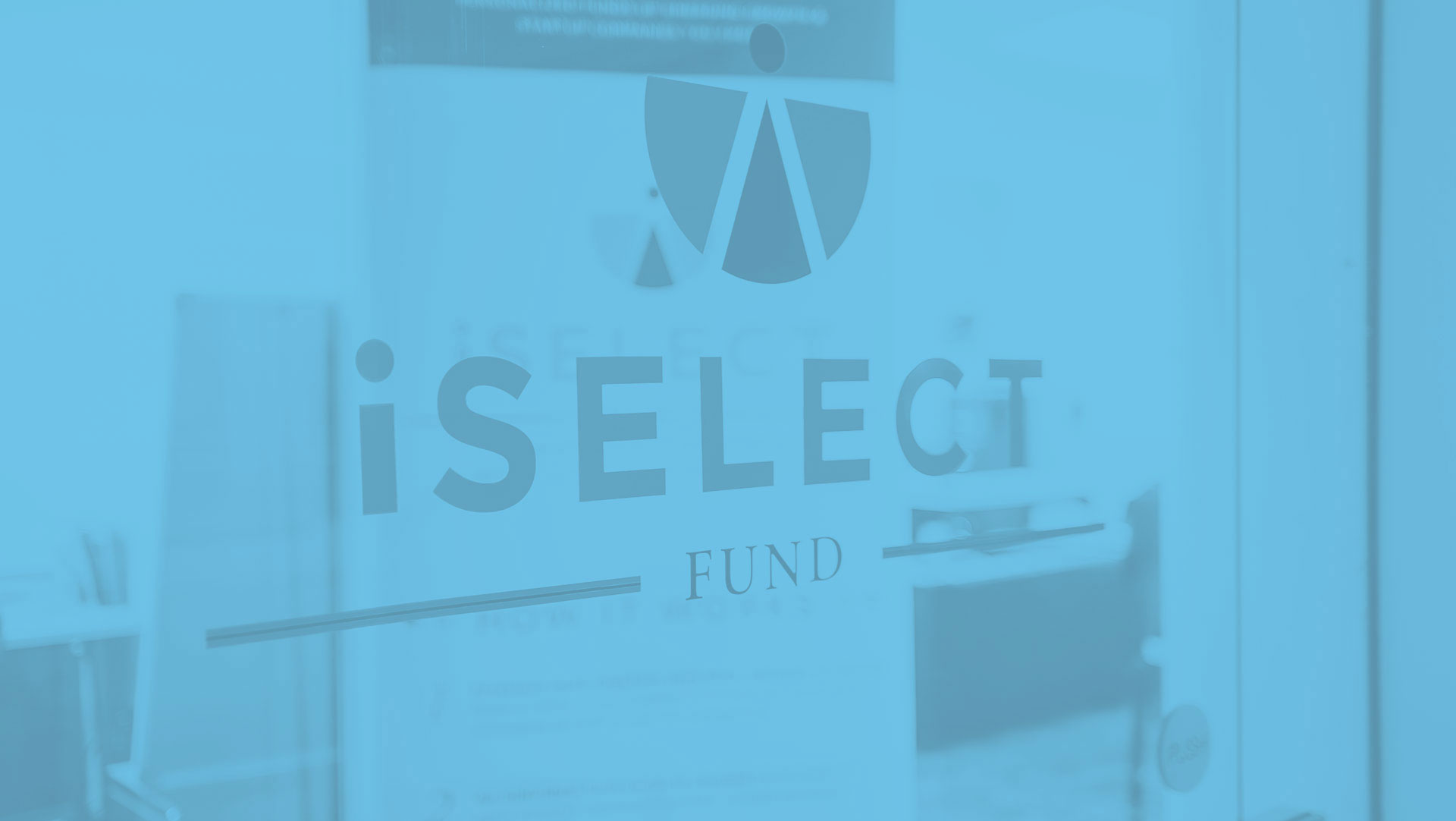Subscribe: Apple Podcasts | Google Podcasts | RSS
On today’s podcast we discuss how startup company Better Weekdays is reducing friction in the talent acquisition process. With their interactive platform that provides tools and services, improving the hiring process for students, colleges, and employers.
Carter Williams: This is Carter Williams, CEO of iSelect with Chris Motley.
Chris Motley: Hello. How are you?
CW: Welcome Chris. Chris is one of iSelect’s portfolio companies and the CEO of Better Weekdays. Better Weekdays is a software application that helps corporations with entry-level hires. A very, very novel approach. Their story is very, very interesting. Chris, could you just give the audience a picture of what Better Weekdays does, you know, 30 seconds, a minute, fundamentally what you’re doing.
CM: Sure, our flagship application is called The Whether, and we really take an approach of inbound recruiting to this process. So the traditional methods of recruiting college students is an outbound approach like going to career fair, or having a career website that you’re trying to draw people to. And we’ve created an application that allows companies to engage and nurture talent to convince them to apply. By doing that you really open up discovery of the most relevant opportunities to college students, especially given the fact that they’ve never done a traditional job search.
CW: So you’ve really taught me something in this process as we’ve invested in your company, that I think I already knew this, Millenials are a bit different. I mean I remember college recruiting, this is 1989. I sort of knew the companies, and I was into engineering and trying to figure out what I needed to do, and pretty much knew the companies were targeting at. But you’ve told me that quantum Millenials, who might be graduating in a degree, don’t really know what the opportunities are in their market, which just is mind-boggling to me.
CM: Yeah.
CW: Help me and the audience understand what today’s student graduating, our listeners’ children perhaps, what’s sort of different about that recruiting process than in the past?
CM: Yeah. I think there’s a number of things that are different, but there are also things that are exactly the same. So the exact sameness in the experience is, you want to work for a company that will develop your career, your professional life so that you can kind of build a good life. Right? That’s the exact same thing that people want today as in the past. However, you just think about the S&P 500, I mean the companies that compose the S&P are very different than even 15-20 years ago.
And if you think about the previous generation where folks worked at companies for 20-30 years, you can easily lose touch in what the opportunities are to give the advice to your kids. And so you have the confluence of technology, a different way of discovering all products and services, so that would extend naturally to jobs, as well as sort of the democratization of information. And technology has developed in such a way where a lot of companies exist now that provide great opportunities for students, but they all have this marketing problem of raising that awareness.
CW: Now you’ve also taught me that that marketing problem is, you know, I’m Emerson. I’m a world-wide leader. I’m an extraordinarily well-run company. But the chance that a Millennial has any idea what Emerson does, is a number approaching zero.
And the other thing you’ve taught me, which I’d love you to help expand on, is that Emerson doesn’t know how to … I don’t mean to pick on Emerson, because I love Emerson, but I’ll use them as an example. That Emerson doesn’t exactly know how to speak Millennial. The HR person at Emerson, sort of is trying to tell people why they should come work for Emerson, but you’ve found that there’s a better way to help that student really comprehend in their context, they, the student’s context, what Emerson does. Can you help us understand that?
CM: Yeah so I think it’s two points there. I think one point is that a company as large as Emerson, may have a brand association in engineering, but they have a tremendous number of jobs that there’s no association for college students for those types of jobs. Another example can be BJC, here in St. Louis, where two-thirds of their jobs have nothing to do with being a healthcare practitioner.
CW: This is the largest hospital system in St. Louis.
CM: And largest employer in St. Louis. And again, most of their open jobs have nothing to do with being a healthcare practitioner. So you think BJC, you think hospitals, nurses, doctors, etc. But you don’t think about all those opportunities. So part of it is, companies may not have the consumer-facing brand, so the awareness is approaching zero with Millenials. Or companies have such a strong brand in an area, where they have other positions that are hard to fill, simply because you don’t think about it. An easy example is Apple. It may be obvious now, but three, four, five years ago, their biggest, most hardest to fill position was retail, because most people thought design, engineering, software development, not people to man the Apple Store. So that’s the first point, strong brands create an association or the lack of brand awareness creates a situation where there’s just no awareness whatsoever.
The second point is language. I mean, you taught me, especially as an entrepreneur, you have to kind of talk about your business in the most basic language. Right? So we help employers recruit college students easier. How we do it, it gets more complicated and that sort of thing. But it’s the same as true in recruiting, we live in our companies and our lives, and we’re so ingrained that we don’t use simple language to describe what we do. An example is a company in town called Worldwide Technology, and Worldwide Technology is a systems integrator. Now I’m almost 36 years old, it took me a long time to understand what a systems integrator was, which basically means that that situation is magnified for someone in a college campus. If instead Worldwide said, “Help us help our customers find and implement the best technology.” Well that’s something that anybody can understand. And that is the core of the issue, that we are speaking a certain language as business people, or as recruiters, that just doesn’t register to someone in college who is pursuing the job search or the internship search for the very first time, and they use completely different language.
CW: So the other thing I’ve learned, is this is a big problem. High unemployment in the young graduates, they want a job, that the numbers are sort of shocking. The hiring process, I guess for graduates, college graduates, corporations spend as much as $8 billion a year in that process.
CM: Yeah, it’s actually super interesting and this is the … I mean I laugh every time I think about it, because the Major Industry Association does a survey amongst employers who recruit college students, and one of the questions they asked was, “How do you recruit college students?” And most of the companies, their number one activity is a career fair. Then they asked, “How effective do you find the career fairs?” And 72% of all employers found the career fairs ineffective, and you juxtapose that to that number you just said, which is $8 billion spent trying to hire college students. So almost everybody agrees that what they do now doesn’t work, yet they spend an incredible amount of money on it each year. And so that’s where we see the wide spaces being to dominate it and to sort of redefine how students discover opportunities, and how those organizations discover talent.
CW: And I’m getting that it’s that discovery process. So the corporations spend $8 billion a year running career fairs or whatever the routine is. They’ve sort of done this year over year, and it’s like let’s run another career fair. So they’re spending $8 billion a year doing that, and only 74% of the applicants disappear somewhere along the line of I guess when they first start getting engaged with a corporation-
CM: Oh it’s the application process. Yeah. I mean 74% of people who start an application process drop off somewhere along the way.
CW: Because they’re not qualified, or they lose attention or what?
CM: Part of it is the … I don’t know the last time you applied for a job, but it’s a pretty arduous process. And if you barely…
CW: That’s the great thing about doing venture and being entrepreneurs. You never have to apply for a job. You just keep making the jobs up.
CM: But I tell you one thing, we all hate doing more work, and if a company makes it very cumbersome to apply to their job, the most talented people will choose to do something easier. So what’s interesting about that stat, you know 74% of people dropping out in the application process, is that that doesn’t even include the people who may be considering your company, but choose not to apply. And it also doesn’t include the people who don’t even know your company exists. So it’s a lot of waste that’s in the system, and I think that what we have built is reducing a lot of that waste, and that friction in the current process.
CW: So, I’m a corporation and we certainly know this as entrepreneurs, we know that people are absolutely the most important asset. At the end of the day-
CM: Without a doubt.
CW: … they walk, your most important asset walks out the door, and hopefully walks back the next day. If I’m a corporation, and I’m spending $8 billion and what you’re basically telling me is, the people who I want to employ either or don’t even know to apply to my job, or apply to the job and somehow get pushed away because I’m not communicating with them in an effective and compelling manner. And so my $8 billion investment is-
CM: In aggregate obviously, all companies pay this.
CW: In aggregate, is misplaced and so for a company like an Emerson, or somebody like that or BJC, how much do they spend on this?
CM: Well, I tell you the cost per hire from an entry-level perspective is about $4000. That’s reported by-
CW: So this is somebody that you’re paying 15-20 bucks an hour.
CM: Or the equivalent of $45,000 a year roughly.
CW: Okay. So roughly 10% of their first year of salary cost to find that person.
CM: You’re exactly right. That’s a good way to think about it. And if you think about, well what is the upcharge for someone who has the experience, and the staffing firms have pretty much set this pricing model or structure. It’s 20-30% of the starting salary for an experienced-level hire, based on their model. And that’s a huge opportunity for us you see, because at the entry level, it’s roughly 10% of the starting salary, but our pricing model is such where it’s much less than that.
CW: So how much do you reduce that by? If I’m sitting here and I’m the head of HR or somebody … I’m the person who makes this buy decision, and I’m saying I’m going to spend money on career fairs and my current existing system is $4000 per, 10% per hire. But Chris has now come in and said he’s going to offer his solution, what is-
CM: Yeah, so our pricing model is, first of all, it’s all within the context of inbound recruiting. So it’s something you do all the time. You’re always recruiting. And if you want to engage Millenials, it’s about creating and distributing content that speaks the language of the Millenials and meets them where they are. So that’s an ongoing process, and so as such, we charge a subscription that starts off at $500 a month and it kind of goes up from there depending on the company size. So for an average company, it’s paying us let’s say $12,000 annually, well this is for unlimited job postings, both for internships and full-time jobs, which basically translates to unlimited hires off of our platform. So you can easily see a case where your cost per hire of entry-level talent is less than a thousand bucks. A lot of people say-
CW: So I’m paying $4000 and you give me the option to start to bring that price down to something like a thousand.
CM: Or less than that.
CW: And I’m also getting a more engaged, more interested employee.
CM: Yeah, and I think that the engaged part is important, whether someone becomes an employee or not. Because let’s say you’re Enterprise Rent-a-Car, and you have been nurturing someone to help them understand how they could be successful in your organization. And for whatever reason, you don’t hire them. Well you just gave them a great candidate experience. So A, they’re more likely to rent a car from you the next time they go out of town. And B, they’re more likely to recommend your company to others. Starbucks was a pioneer in this space. I mean they’re selling $5 cups of water, no offense to Starbucks. The point is that Starbucks had one of the best interviewing processes of the many companies, because at the end of the day they still wanted you to buy that very expensive cup of coffee. And so this whole notion of candidate experience is a very big trend these days, and I think it’s really put our business in the sweet spot because you improve the candidate experience by communicating with them in a relevant and engaging way.
CW: And relevant and engaging, you speak Millennial. It shows up on their iPhone. They can sort of check it. You’ve got a new version of your application, they can sort of call The Whether.
CM: Check The Whether. Yeah.
CW: You can check on a regular basis, so hey my girlfriend is moving to St. Louis. I want to find a job sort of doing what I like to do and I can-
CM: Yeah, so check The Whether in St. Louis, exactly. And what’s interesting about it is it’s all about personalizing career pathways. And it’s a very subtle but important point because sometimes you just don’t have the skill for a job. But what about the school or certificate program you can enroll in to upscale yourself? Well that’s sitting right next to the job you may aspire to have. And so that holistic experience that we’ve created that can personalize not only the job or the internship, but relevant events in the future, mentors, or ways that you can upscale yourself, I think is part of the winning combination that really helps to generate increasingly more and more engagement.
CW: So then as you continue to expand on this, you’ll be able to give them some insights to show them, hey here are other people that worked at BJC, or in the field to get some perspective-
CM: Well we take it even deeper than that. We will basically say, “Here’s a day in the life at BJC.” “Here’s an example of an executive profile of someone who went to your Alma Mater.” “Here’s a person who’s already opted in to be your mentor who works at BJC, and they’re like a second year associate, so they’re very much like you.” Versus matching you with some 20 year executive who really doesn’t … His day in the life is very different than yours would be. Let’s just say that.
CW: So if I’m the person running this decision at some place like BJC, you’re telling me one, you can get my cost to acquisition down. Two, I’m going to engage with those folks in a more meaningful way, in a way you can understand what BJC’s looking at, but you also understand the language of the young people, and you can sort of help them make sure that it’s a job match both ways.
CM: Exactly right. BJC is increasing their brand exposure. They’re doing so in a way that is talking about their company culture and what’s valued there. That attracts the most relevant people who care about that sort of thing. It improves the candidate experience, so that each candidate and hopefully new employee will be very engaged at your company, which is a whole other kind of part to this. And ultimately they become a net promoter of your company, right? Everybody knows that the best source of hire, is referrals. It works better at larger companies than smaller companies, but it’s the biggest driver of how talent shifts from one organization to another. The problem is in universities, you don’t have a network, not professionally. And so that’s broken down. So you have to have … It’s an opportunity, I guess a different way of saying it, for a company again to create and distribute content to meet people where they are, because they don’t have that referral to help understand what that company’s about. So companies can play an active role in that process.
CW: So we invested in you in part, well certainly because the core business model makes sense. As we look at what we call the gig economy, an explanation we have for why there’s an employment displacement is what I call an impedance mismatch. I’m an engineer, so everything’s an engineering thing, but an impedance mismatch in which companies don’t know how to find the right people. Students don’t know how to connect with the right company. And that if we can help those folks understand better how to match we get better performance. Now you were that we invest in startups, is because the person leading it is an awesome entrepreneur.
CM: Thank you.
CW: And has incredible resilience, and you, to get more personal, how did you … You’ve got a very interesting story about how you landed here and I love the kind of resilience that you’ve pursued. Can you tell the audience a little bit more about how you got here?
CM: Sure. And on the resilience point, I don’t know if I can take total credit for that. I think it comes down to how I was raised. I mean I’m a son of a teenage mom on the South Side of Chicago. You talk about resilience, that’s where it comes from. But I grew up in a household that while we weren’t rich in terms of money, it was very rich in love. And my mom recognized very early on that she provided me with opportunities that gave me access to people, or information, or the resources that I can probably increase my chances of being successful. So one of the most formative things I think that I experienced was, I was a part of this program when I was in 7th or 8th grade, called A Better Chance. And this organization basically helps to match inner-city youth with college preparatory boarding schools more often than not, that are sort of feeder schools into the top universities of the country.
CW: I gotta say, do you know a guy named Frankie Cruise?
CM: I do know that name.
CW: He was a classmate of mine.
CM: Get out.
CW: Yeah.
CM: Small world.
CW: I didn’t realize you were a part of A Better Chance, because he was … Is he still with A Better Chance?
CM: Well, I mean I look at it as a lifetime thing. I mean it starts off-
CW: He was part of it, and went to a boarding school with me, and ended up leading part of ABC I thought. I never knew that. Okay, keep going.
CM: Yeah, it’s a phenomenal program and the alumni list of you know the Deval Patricks or Marty Nesbitt, you know one of Obama’s best friends.
CW: Really, I didn’t know that.
CM: Yeah, they’re all A Better Chance alums, so very high expectations. But the point is, I think it also proves how that model works. The point is that you can see matching to opportunity and access to opportunity has been a theme, and there’s 10 stories after that which has sort of the same dynamic. I think what’s interesting about it is programs like A Better Chance, there’s many others, served a very important purpose in the community. Because this is the era of pre-Facebook, and pre-social media. Even when I came from high school to college, post-college, this is all prior to social media.
CW: So this is-
CM: 2003 is when I graduated from Columbia in New York. So this is three years or so before Facebook was launched. The point I’m making is that when you had organizations like this that did in a very manual way, what my product does today, right, it’s very, very effective. The difference between then and now, is that you have social media. So you have the apparent access to anything you want. And that’s not necessarily the case. It still goes down to relevance, and personalization, and access to opportunities that sort of meet your strengths and values. So I think many of these organizations, while they still serve a very important role, I think they find themselves trying to figure out how they stay relevant this day and age. Right? But anyway, I’m off subject. The point is that-
CW: But it sounds like you were the beta for your application.
CM: Of course, everything comes-
CW: Or the alpha.
CM: Everything comes out of personal experience. Either directly or what you’ve seen frustrates other people. And so for me, you know I went to this college-prep boarding school. I met different people, access to opportunities. I then was in another program over the summer called the LEAD program in business, and it was at Columbia University, so no doubt why I ended up going to Columbia. And one of the speakers was this gentleman who was a trader at Goldman Sachs. And I said, “What’s your job?” He says, “Well I buy low, and I sell high, and I make a lot of money.” And I said, “Legally?” And he said, “Yeah.” So I said I could do that. And the point is, I didn’t grow up in a place where you even knew what legal trading is. There was a lot of trading on the South Side, but not of oil and other commodities that are legal commodities.
And the point is, you can’t be what you haven’t seen. So when you think about the folks in this country in colleges and universities, they don’t see the opportunities. I mean, who goes to the universities to recruit? Large companies. But who creates the most jobs in this country? Middle-market companies. And they’re at a competitive disadvantage. So it opens up a huge opportunity, which I think leads to that stat you mentioned earlier about the 8% unemployment with Millenials. It’s a structural unemployment. They’re not seeing the opportunities and vice versa. And so there has to be some facilitator in the middle, which The Whether is a mediator.
CW: It’s almost separate. I mean if each corporation tries to do this, it’s something different than saying, look I’ve got a trusted partner. We’re going to use The Whether. They’re the people that understand how to get this point across, and we’re going to team to go get the best people.
CM: Exactly right. I think you have certain markets where you have to have a platform. Dating, right? There has to be a platform that can facilitate that. They’re not many, even if there’s 10 or 15 or 20 apps that do this, that’s not a lot when you think about the amount of people. Facebook plays a very important purpose, even when they first came out, it was really cool to know who else was in your community. I think the same is true in the job space. When you have so much information out there, these days, you have to kind of pare that down to the most salient points to understand how to manage your career. And today, nothing does that. Nothing does it in the market for college students. I’m always waiting for someone to challenge me on that point, because it may be the source of a new innovation, or it may mean I need to pack my bags up and go home.
CW: Well so you went from Columbia. You end up at Goldman. You’re hanging around people that, you know, if you get into that track, gazillions of dollars. And you left?
CM: Well, the goal was to … Well yes, I left. But the goal was to understand how to make money, and the goal was to prove to myself that I can compete at the highest levels. But when you see how much money you make for an organization, and you see the drivers of wealth creation, you almost owe it to yourself to figure out how to do it on your own. And that’s what I did. They taught me everything I know from a data and analytics perspective. I mean it’s a pretty intense environment, and building a company culture and that sort of thing.
But one of the reasons I went to work for Goldman, people used to ask me this question. And I said, “Well, I want to work at a place where I can make the most money in the shortest amount of time, and if I don’t like it I can still have any other job in the world.” And I think that’s the logic students should take these days quite frankly. The point is that I didn’t forget how to trade. I didn’t forget how to value companies and do the traditional banker things. So at 25 years old, I had a business idea that I thought had some legs to it in the manufacturing space, and then I pursued it. And because it was learning, and it was building important tools in the toolkit that I thought would be important to build a significant business. So yeah, that’s kind of how I try to stay focused on the craft of building things that are ultimately useful versus just sort of facilitating transactions, which you know is not that fun in the grand scheme of things.
CW: And so we just have a moment more. If we were to interview you again, let’s say a year from now, or two years from now. What do you want to be able to say? What is it you want to be able to say to the market or yourself?
CM: Yeah, that The Whether is the best place for students to discover the most relevant opportunities, and the best place for university recruiters to discover the most relevant talent. I mean if we achieve that, we’ll create a significant, significant business and that’s exactly what we focus on, and that’s what, you know as Warren Buffett says, “I tap dance to work everyday,” because it’s a noble vision.
CW: So you help create jobs. You help reduce the cost for BJC to find the best people. You’re a hard-working entrepreneur. For the people out there listening, this is the kind of thing that transforms industries. And Chris is the kind of guy that does it. So we want you back. Thanks again for your time.
CM: Thank you very much. Very kind of you.
CW: It was great having this conversation.
CM: Likewise, thanks.






